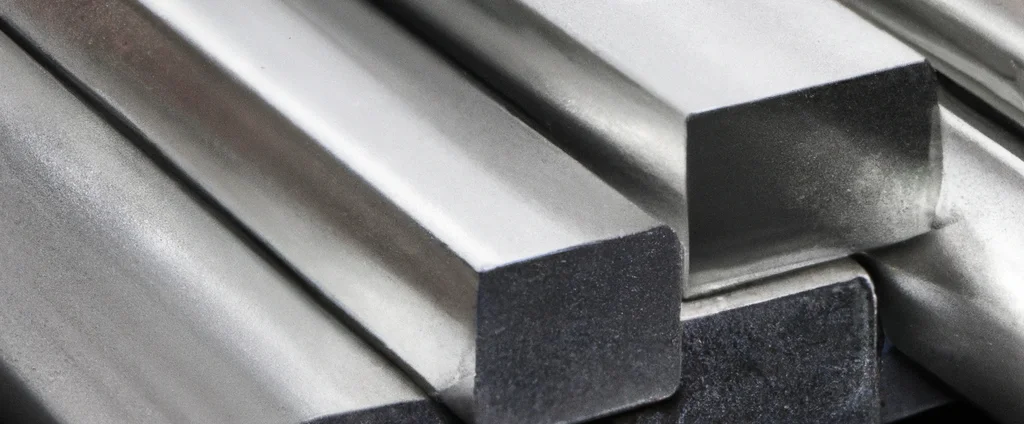Aluminum Alloy 6101 (UNS A96101)

Aluminum 6101 is a heat-treatable Al-Mg-Si alloy optimized for electrical applications. Its balanced magnesium-silicon composition ensures excellent corrosion resistance while maintaining formability, making it ideal for busbars, heat sinks, and power transmission systems.
| Chemical Composition | ||
|---|---|---|
| Element | Min | Max |
| Aluminum | 97.6 | 99.4% |
| Boron | —— | 0.06% |
| Chromium | —— | 0.03% |
| Copper | —— | 0.1% |
| Iron | —— | 0.5% |
| Magnesium | 0.35% | 0.8% |
| Manganese | —— | 0.03% |
| Silicon | 0.3% | 0.7% |
| Zinc | —— | 0.1% |
| Residuals | —— | 0.1% |
The following table provides a list of aluminum 6101 properties in both SI and US customary/Imperial units.
Click on the button to switch between Metric and Imperial units.
| Physical Properties | Metric |
|---|---|
| Density | 2700 kg/m3 |
| Mechanical Properties | Metric |
| Tensile Strength | 97 MPa |
| Yield Strength | 76 MPa |
| Young’s Modulus (E) | 69 GPa |
| Shear Modulus (G) | 26 GPa |
| Elongation at Break | 10 - 25% |
| Poisson’s Ratio (ν) | 0.33 |
| Brinell Hardness | 70 HB |
| Thermal Properties | Metric |
| Melting Point | 620 - 650 °C |
| Thermal Conductivity | 220 W/m·K |
| Specific Heat Capacity (Cp) | 900 J/kg·K |
| Coefficient of Thermal Expansion (αL) | 2.3×10-5 1/°C |
| Electrical Properties | Metric |
| Electrical Conductivity | 3.36×107 S/m |
| Electrical Resistivity | 2.9×10-8 Ω·m |
The values in this table are approximate and can vary depending on various factors such as the specific manufacturing process and heat treatment applied to the alloy.
Advantages & Disadvantages of Aluminum 6101
| Advantages | Disadvantages |
|---|---|
| Excellent electrical conductivity | Lower strength compared to other alloys |
| Lightweight | Limited heat-treatability |
| Good formability | High cost |
| Corrosion resistance |
Applications of Aluminum 6101
Aluminum 6101 is the preferred choice for high-conductivity applications across industries. Key applications include:
- Electrical Conductors: Widely used in electrical applications that require high conductivity. Utilized in busbars, power distribution systems, electrical conductors, and power transmission lines.
- Heat Sinks: Its good thermal conductivity and formability make it suitable for heat sink applications. These components are used to dissipate heat generated by electronic components, such as computer processors, LED lighting systems, and power electronics.
- Busbars and Connectors: Commonly utilized in the manufacturing of busbars and connectors for electrical distribution and control systems. The high conductivity and formability allow for efficient and reliable power transmission in various industries, including power generation, renewable energy, and industrial machinery.
- Automotive Components: Employed in the automotive industry for various parts. Can be found in electrical wiring systems, battery trays, heat exchangers, and radiator tubes due to its lightweight, corrosion resistance, and good thermal conductivity.
- Renewable Energy Systems: Used in renewable energy applications such as solar power systems and wind turbines. Found in the construction of electrical connections, grounding systems, and mounting structures due to its electrical conductivity and durability.
- Building and Construction: Utilized in projects where electrical conductivity is required. Found in wiring systems, electrical panels, and other electrical infrastructure within residential, commercial, and industrial buildings.
- Industrial Applications: Used in various settings that require a combination of electrical conductivity, lightweight, and formability. Examples include switchgear assemblies, motor winding conductors, and electrical enclosures.
- Marine Applications: The corrosion resistance and lightweight nature make it suitable for marine uses. Can be found in boat fittings, electrical systems, and marine structures.
